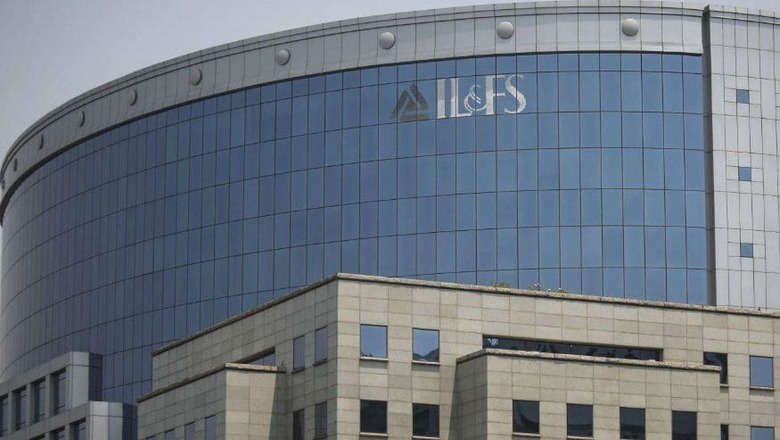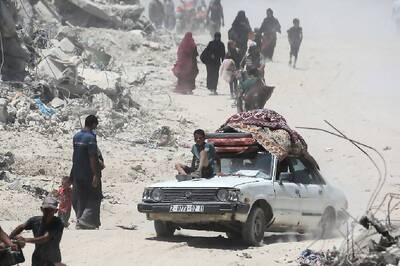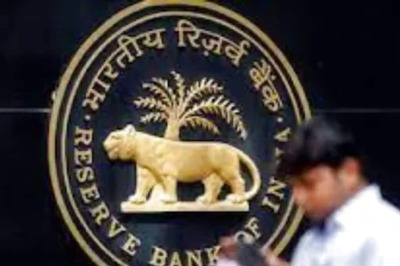
views
The government is tying itself in knots over whether it will step in, in the eventuality that the Infrastructure Leasing & Finance Corporation (IL&FS) collapses.
The IL&FS is not a government owned entity, we are told repeatedly. It has been functioning through a board of directors, which comprises independent directors and others, and it must manage its own problems. But despite the government’s calculated show of apathy over what is threatening to not just take down IL&FS but also have deep impact over the country’s equity and debt markets, it is clear that the government cannot shrug away a role in this crisis.
The government could bail out IL&FS by other means or by nudging state insurer LIC and state-run banks to do the needful. But what matters is IL&FS is too big to fail and it needs rescuing. And the government cannot be a silent spectator, waiting on the sidelines for things to begin falling apart.
Vinayak Chatterjee, Chairman of Feedback Infra, suggests that the government should move quickly and set up a high powered committee which conducts the sale of some “good” assets at IL&FS. “Just like the way the government moved with speed when the Satyam scam broke, it needs to set up a neutral, empowered committee to oversee a quick sale of good assets with IL&FS.”
Chatterjee said no one party may be interested in bailing out IL&FS but the strong assets it has could be sold off piecemeal, thus bringing in the much needed cash.
So why is IL&FS in trouble? The IL&FS group is sitting on total debt of Rs 91,000 crore and along with subsidiaries, it has begun defaulting on repayments. This is spooking the markets, due to the domino impact further such defaults could have. One subsidiary, IL&FS Financial Services, informed the stock exchanges on Monday that it has defaulted on interest payments on commercial paper, without specifying the amount. This is the third time this company has defaulted in a single month.
And analysts at brokerage Elara Capital said in a note to clients that IL&FS (holding company) had earlier defaulted on repayment of Rs 100 crore to the Small Industries Development Bank of India (SIDBI). Another subsidiary IL&FS Transportation Networks India’s (ITNL) five special purpose vehicles (SPV) also defaulted on repayment. “Tight liquidity conditions at the holding company level and weak financial performance of key subsidiaries could lead to an eventual default status of some loans and require credit cost of Rs 45,000 crore (at 50% in a two-year period) distributed among 25-30 banks, as per our calculations,” the brokerage said.
In simple terms, as more defaults by IL&FS and subsidiaries happen, the banking and non-banking finance system of the country could come under stress. Some have called this India’s Lehman moment. Though the markets regulator SEBI and the RBI have begun tightening the screws on IL&FS and its subsidiaries and the company itself has begun pushing its shareholders for more liquidity, the government can no longer afford to keep away from the IL&FS mess. It has made a good start by assuring all concerned that adequate liquidity will be maintained for NBFCs and mutual funds – and this should calm jittery investors somewhat. And as we pointed out earlier, it can expedite sale of assets with IL&FS by setting up a high-powered committee. But that may not be extent of help the government offers in the present crisis, its involvement must be deeper. Why?
First, it is clear that the government is an indirect shareholder in IL&FS. As per the latest shareholding pattern available on the IL&FS website, state-owned LIC owns a fourth of the company. And if one were to calculate just the government’s finger in the IL&FS pie (indirectly), then almost 40% of IL&FS is controlled by government owned entities LIC, SBI and Central Bank.
Second, a large chunk of the impact in case IL&FS were to collapse or in default on more repayments would be felt by state owned banks. The Elara analysts have listed out Punjab & Sind Bank, UCO Bank, United Bank of India, Bank of India, Vijaya Bank, Syndicate Bank, Allahabad Bank, Bank of Baroda, Punjab National Bank and Union Bank having exposure in IL&FS. These analysts have said that regional and mid-size state-owned banks would witness significant impact in terms of likely erosion in networth.
In fact, mid-sized state owned banks and smaller private banks are likely to take the maximum hit in case of defaults.
Third, the government is duty bound to step in since the financial mess at IL&FS happened because of the weakness in regulatory mechanisms, set up to check precisely such catastrophes. How come the alarm bells did not ring at the regulator’s doors earlier? Were no questions asked about the continuance of one man at the helm for over two decades? Why was the situation allowed to get out of hand for so long? Not all of IL&FS troubles are of the government’s making, but surely keeping such a large and systemically important financial institution away from the current financial mess was also the regulator’s responsibility.
The government also needs to figure out how to deal with thousands of crores of exposure of state owned banks and the life insurer can be protected. A meeting between IL&FS, the RBI and its shareholders is scheduled for Friday, where a possible rescue plan could emerge.
(The author is a senior journalist. Views are personal.)




















Comments
0 comment